USIP Publications – 11/13/2020
https://www.usip.org/blog/2020/11/vietnam-veterans-fight-dignity-and-peace
A Vietnam Veteran’s Fight—for Dignity and Peace
By James Rupert
War put a bullet in John Lancaster’s spine. He turned that into a life’s work of compassion.
In 1967, America was racing the Soviet Union into space, debating war in Vietnam and dancing to Aretha Franklin’s “Respect.” John Lancaster graduated that spring from the University of Notre Dame. Having studied on a Navy ROTC scholarship, he took a commission in the Marine Corps. After several more months of training, Second Lieutenant Lancaster landed at Da Nang airport amid the Vietnam War’s bloodiest battle: the 1968 Tet Offensive by the North Vietnamese and Viet Cong forces.

A Veterans’ Day Story

In response to Tet, the military was rushing new forces into combat, including a shipload of Marines who had been conducting goodwill exercises around Asia. “I had been in-country all of 10 days and I was assigned a platoon of guys from the 1/27 Marines. Most of them were 18-year-olds; I was 23.” Lancaster issued his troops new M16 rifles and soon led them into a flat landscape of rice paddies, canals and mostly abandoned villages near the city of Huế.
Dug into farmland on a dark night, Lancaster’s troops heard first a shrill blast of whistles as a large force of North Vietnamese attacked. “They came running in with guns blazing, throwing satchel charges and grenades,” Lancaster recalled in an interview. “They got inside us real quick because they were willing to take the casualties.” The battle raged for hours. Amid smoke, muzzle flashes and explosions, Lancaster heard injured Marines call for help and leapt up. In a sprint to the Marines’ foxhole, Lancaster “came face-to-face with an enemy soldier,” another Marine wrote. Before Lancaster could aim his rifle, the North Vietnamese soldier fired.
A bullet tore through Lancaster’s chest, ripping holes in both lungs. Another shattered his spine. Minutes later, Marines dragged Lancaster out of gunfire and “a really good corpsman figured out which lung he could plug up,” Lancaster recalled. “He rolled me onto my side to let me breathe, gave me something to hold onto and warned me that to survive I had to resist the shock, stay conscious and not let myself roll onto my back.”
In five hours of chaos, Lancaster’s platoon of 32 suffered four Marines killed and 18 wounded. One of the dead, Lancaster said, was “a guy I had wanted to leave in the rear; he had only a week left before he was due to return home to his wife and two kids.”
Just five days later, U.S. and North Vietnamese diplomats would hold their first meeting in the Paris peace talks to end the war. John would spend months in hospitals, returning to America with the Purple Heart, the Bronze Star and a life to rebuild. “I lost a lot of really good Marines. … It took me a while to get over that day, I’ll tell you, and to get my life back together.”
Disability Rights: The Longer War
Lancaster’s next battle would last not hours, but decades. He decided to follow his father’s career path as a lawyer and applied to Notre Dame’s law school. In his interview with the two senior deans, “it was clear that they didn’t want to take me,” Lancaster said. “I’ll never forget Dean Fascio looking right at me and saying, ‘John, you don’t understand. We’re literally out of seats this year in the first-year class.’ And I said, from my wheelchair, ‘Not to worry, dean, I’ll bring my own.’ Then he asked, ‘How are you going to get up the steps into the building?’ And I said, ‘the same way I got in for this interview. I’m gonna corner a couple of beefy students and ask them to pull me up.” He added: “By the way I notice there are plans for a new wing on the law school and I fully expect it will be completely accessible to people with disabilities under the recently passed standards of the Architectural Barriers Act of 1968.” The deans let him in.
Over years, potential employers dismissed John’s ambition as though reading from a script: “How can you deal with the courthouse steps?” “The law library stacks are too narrow for you; how will you do research?” Or simply, “We don’t think you’ll have the stamina to work in our office.” Finally, Lancaster won his first legal job at the Veterans Administration, “poring over case files in a in a gray office with other guys wearing gray suits and gray complexions.”
So when a prominent disability rights campaigner, Judith Heumann, and another Marine vet, James Maye, rolled their wheelchairs into his office one day, Lancaster seized on their invitation to join the movement as a lawyer for the Paralyzed Veterans of America. “They were building a network of people with disabilities to take on big, basic issues like access to jobs and transportation,” he said. The work would include battling the too-automatic institutionalization of people, notably with developmental and health disabilities. “I toured some pretty ugly facilities in that job,” and “I met a whole bunch of veterans who had paid a high price for war.”
That, plus some work representing indigent prisoners at Washington, DC’s jail, fueled Lancaster’s mission. Over seven years he drafted and helped implement Maryland state laws protecting legal rights of people with disabilities. He then moved to the center of the nation’s disability rights revolution. Under the George H.W. Bush and Clinton administrations, Lancaster worked in a small White House office to help Americans understand and implement the 1990 Americans With Disabilities Act—the landmark law that prohibited discrimination in employment and public accommodations against people with disabilities. “We toured all 50 states, explaining the law to the business community, to vocational rehabilitation services and to people with disabilities,” Lancaster said. In each city, “we would hold a big reception to bring everybody together. It was amazing how often the head of the state vocational rehabilitation agency had never even met the head of the chamber of commerce. There was an amazing disconnect between those preparing people with disabilities for the world of work and those who had the jobs!”
Then one day, a quarter-century after Lancaster took a couple of North Vietnamese bullets in a rice paddy, a Vietnamese-American man “just showed up in my office.” Ca Van Tran explained that he was building a campaign to help Vietnamese disabled in the war. “I hear you’re a Vietnam veteran,” Tran said. He asked: Would John help the men he once fought?
Reconciliation in Vietnam
Lancaster won backing from U.S. officials and made several trips to help Tran advocate for disabled Vietnamese. Soon, he moved from his White House job to a city whose very name had once been an American epithet for evil: Hanoi. Through a nonprofit organization, Vietnam Assistance for the Handicapped, Lancaster spent nearly five years working in support of men whom war had once defined as his enemies.

“One of my best friends in Vietnam is a disabled North Vietnamese army vet who heads, no kidding, the ‘Disabled Veterans Sports and Singing Club’ in Hanoi,” said Lancaster. “When they weren’t playing wheelchair basketball or tennis, they were a choir performing Vietnamese patriotic and folk songs. … Manh Tuan had a motorbike that had been adapted into a three-wheeler with a platform on the back big enough for me to ride along. So we would go around the city together on his motorbike.” Manh Tuan was disabled “the same way I was—with a bullet in the spine”—and in the same place, fighting for those rice paddies east of Hue in May 1968. “We figured out that we never personally fought against one another,” Lancaster said, “but we were injured doing exactly the same thing for opposing sides.”
“The Vietnamese government was pretty good at making positive changes,” Lancaster said. “They recognize how widespread disabilities are in Vietnam from what they call ‘The American War.’ We spent time in three-quarters of Vietnam’s provinces. And what is most horrific is the new casualties and disabilities being inflicted on innocents.” Monitoring organizations have counted more than 100,000 Vietnamese killed, disabled or hurt since the war’s end by tons of unexploded bombs and shells decaying in Vietnam’s soils and waters. The Vietnamese Red Cross estimates that 3 million of the country’s people, including 150,000 children suffer cancers, birth defects or other disabling ills from the poisonous defoliant Agent Orange.
Veterans and the Costs of War
On Veterans Day, what meaning should we take from a story like John Lancaster’s story? Partly, it’s an answer to the question “What are the costs of war?”
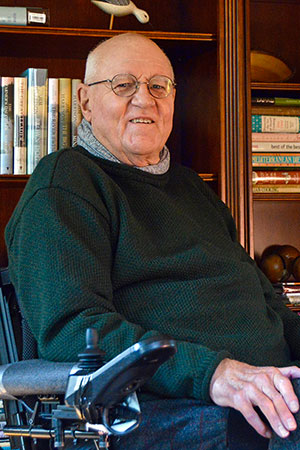
Economists, neurologists, demographers and others dig ever deeper to answer that question with data. Research from Brown University’s Costs of War project, Australia’s Institute for Economics and Peace and the Carnegie Commission’s Costs of Conflict has deepened the evidence for what Lancaster tells us from experience: Whatever we may we see and understand of war’s costs is a fraction of the reality.
Too, Lancaster’s story is a reminder that some of our most committed peacebuilders are warfighters. When Americans campaigned decades ago to establish a specialized “institute of peace” to strengthen our nation’s ability to prevent wars, combat veterans led that movement. They included senators (and World War II lieutenants) Mark Hatfield of Oregon and Spark Matsunaga of Hawaii. A leader at the grass roots was former Navy ensign Mike Mapes, who had witnessed nuclear war at Nagasaki.
Lancaster helps oversee USIP’s work as a member of its Board of Directors—a role that he says helps him close a circle. Like the many other war veterans among the Institute’s staff and partners, Lancaster labors to prevent violence because he knows, better than most people, its costs. Also like USIP, Lancaster works with the certainty that—even where the violence has been brutal and the trauma deep—reconciliation and peace are always possible.
https://www.usip.org/blog/2020/11/how-art-helped-propel-sudans-revolution
How Art Helped Propel Sudan’s Revolution
Artists helped spur conversations about the trajectory of the country, develop a shared vocabulary and organize protests.
During Sudan’s 2019 revolution—as people mobilized across the country with sit-ins, marches, boycotts, and strikes—artists helped capture the country’s discontent and solidify protesters’ resolve. In particular, artists became an integral part of the months-long sit-in at the military headquarters in Khartoum, which was known as the heart of the revolution until it was violently dispersed by paramilitary forces on June 3, 2019. This immense expression of creativity was both a result of loosening restrictions on freedom of expression and, at the same time, a catalyst for further change.

Throughout Sudan, artists helped spur on conversations about the trajectory of the country and also used murals to share information about dates and times of protests. (See Special Envoy Donald E. Booth’s video statement here.) Jonathan Pinckney, program officer and research lead for USIP’s program on nonviolent action, points out that art has played a role in many major nonviolent struggles as a way to create a shared vocabulary: “Art can provide a unifying center for the many different specific goals and agendas … Few people may read a movement’s hundred-page manifesto, but everyone can recognize the colors, songs, and images that movements draw upon to tell their supporters who they are and what they want.”
As for Sudan’s artists themselves, Mustafa Abushamma, owner and founder of Khartoum’s Mojo Gallery, says that the revolution brought a new generation of artists to prominence: “When the revolution happened … the whole world was seeing these amazing murals on the walls in Sudan.” (See USIP’s interview with Mustafa Abushamma here.)
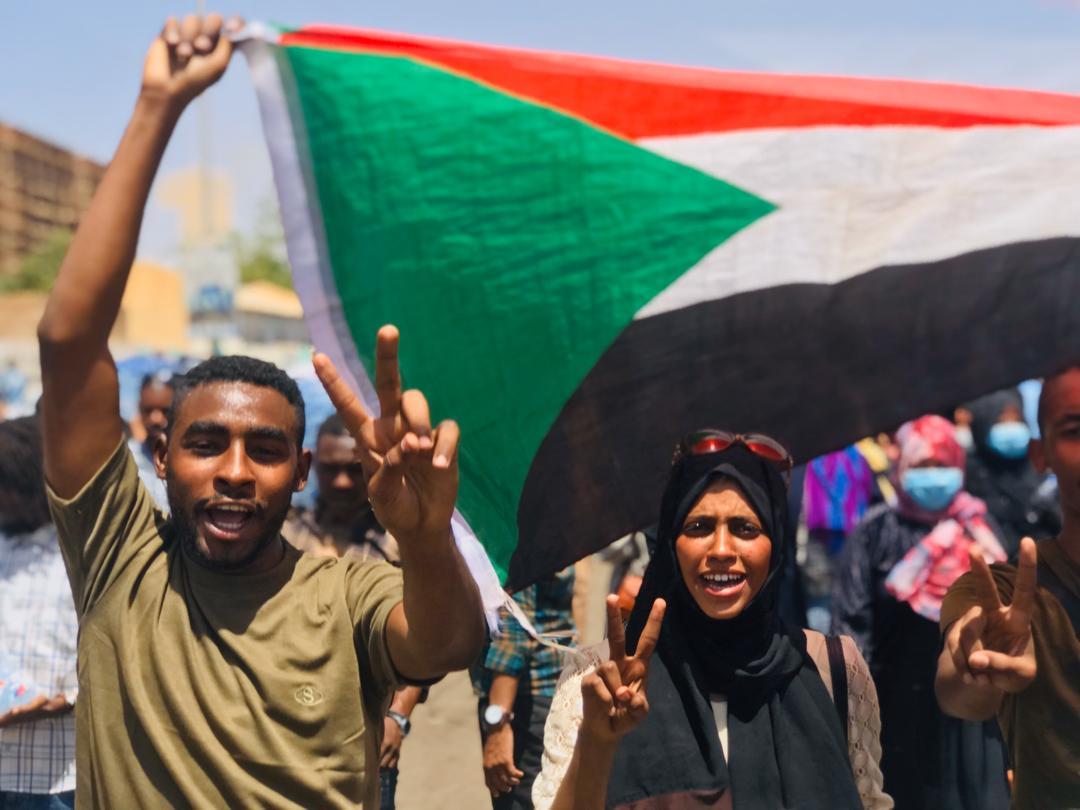
Murals: Keeping Eyes on the Revolution
One of the first forms of art to pop up during the revolution were outdoor murals. As protesters flooded the streets, so too did art installations that depicted a wide array of topics.
Graffiti artist Assil Diab, known as Sudalove, created murals across Khartoum to honor the martyrs of the revolution and of the regime of Omar al-Bashir. Assil describes her work as “a medium to start dialogues and conversations with the community and also speak on behalf of so many people,” noting that upon seeing a mural, “whether you’re with or against the revolution, you are forced to be reminded of what is going on.” (See USIP’s interview with Assil Diab here.)
Families of Sudanese martyrs have found some catharsis in watching or even assisting Assil Diab in creating murals honoring their loved ones. For Pinckney, this comes as no surprise, as “there is something powerful about art that touches the emotions, expresses shared humanity, and invites the participation of lots of people.”
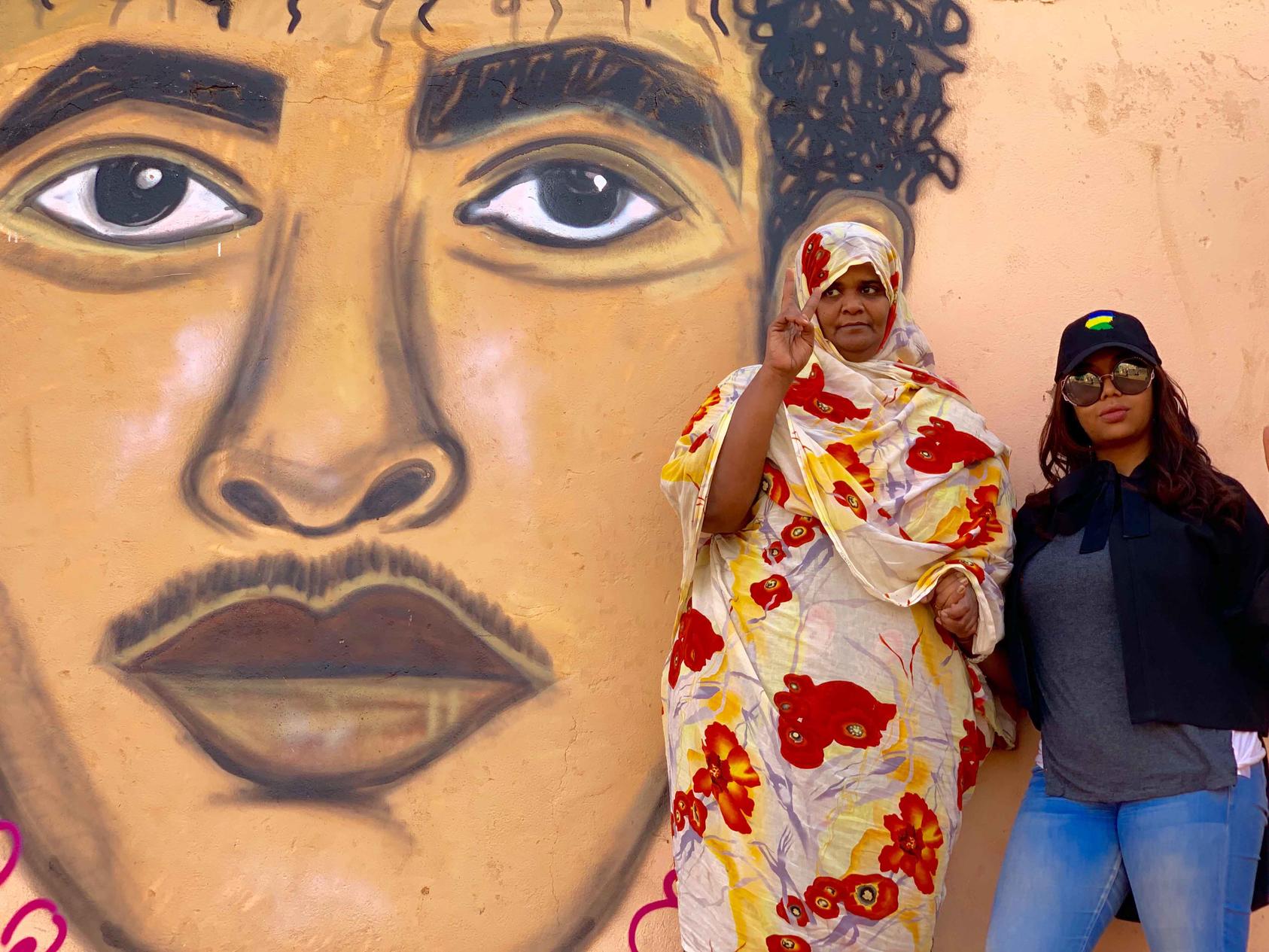
Galal Yousif is internationally recognized for his work across many mediums, including murals. Throughout the revolution, he created several large artworks at well-trafficked locations in Khartoum, including the widely admired mural “The Scream” that was destroyed during the violent crackdown on the Khartoum sit-in.
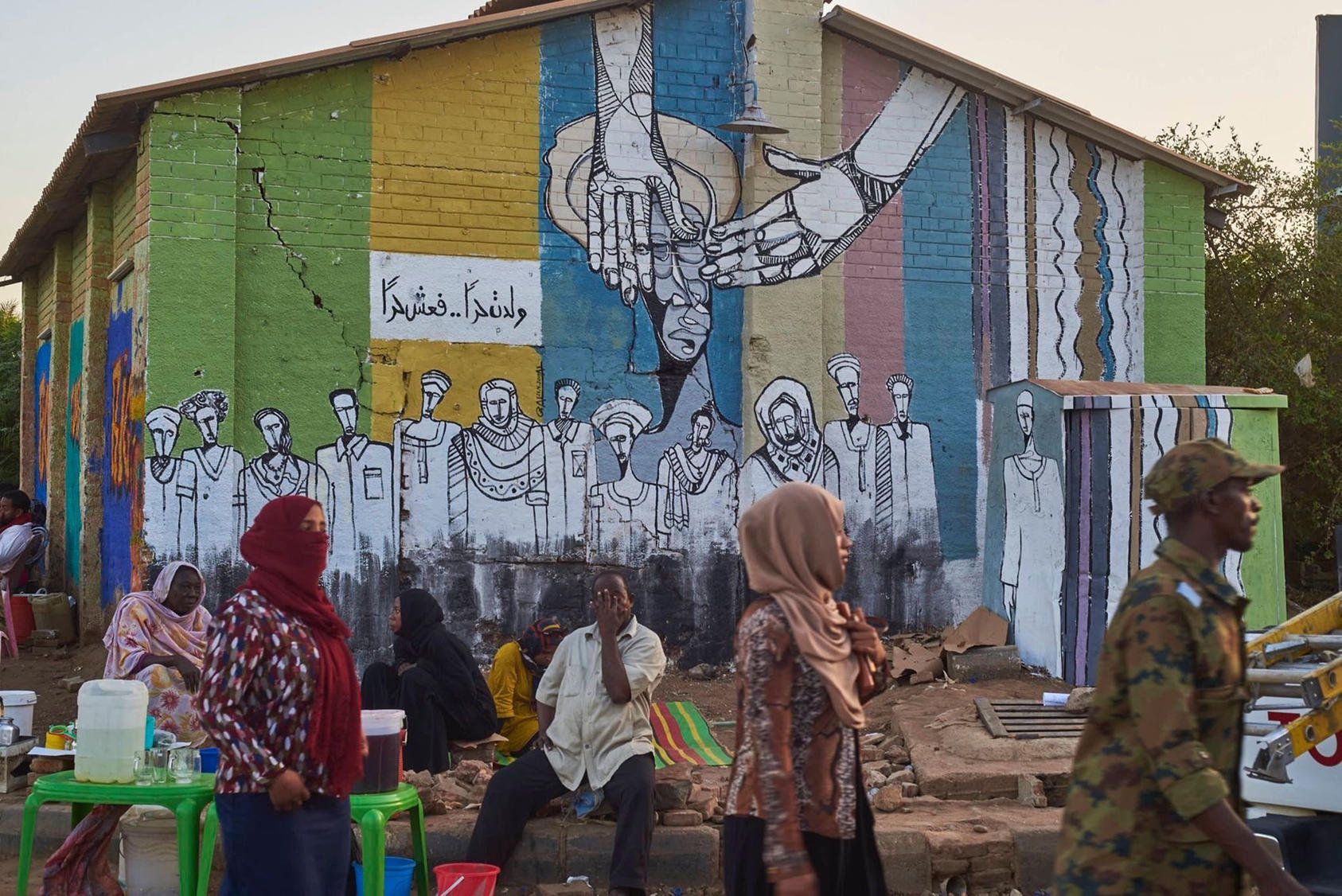
Although he has been asked to repaint “The Scream,” Yousif maintains that the mural was part of the massacre and that he will not recreate it until there has been justice for the lives lost. Transitional justice is one of the foremost challenges facing the Sudanese government, and many Sudanese are frustrated by the lack of progress to date. Beyond “The Scream,” Yousif has painted other prominent murals in Sudan, including one near the sit-in site and another that he created under Mak Nimr Bridge in Khartoum with a team of volunteers.
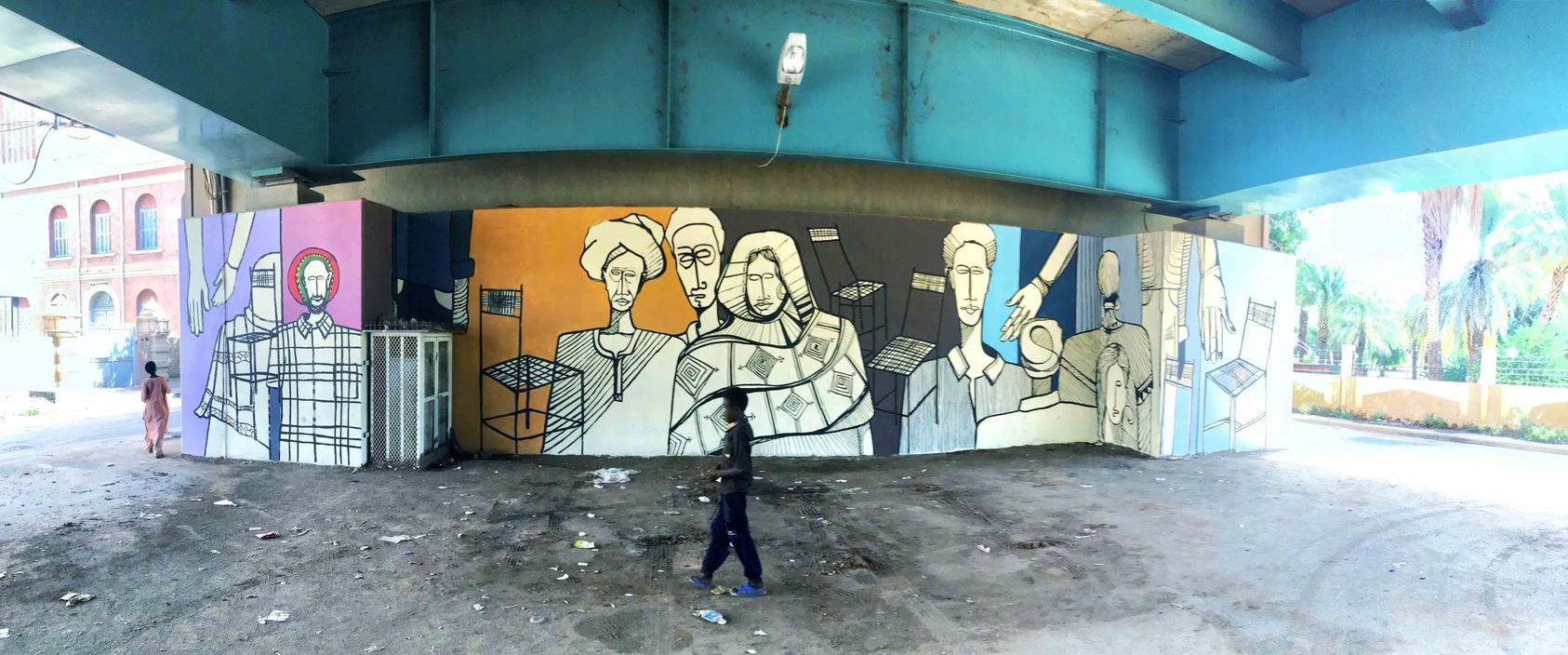
Meanwhile, artist Alaa Satir’s murals in the Burri neighborhood of Khartoum highlighted the prominent role of women in the revolution, including a mural of three women captioned “We are the revolution and the revolution continues.” After playing a pivotal part in organizing and leading protests, women have been mostly sidelined during the transitional period—signaling the need for further progress.
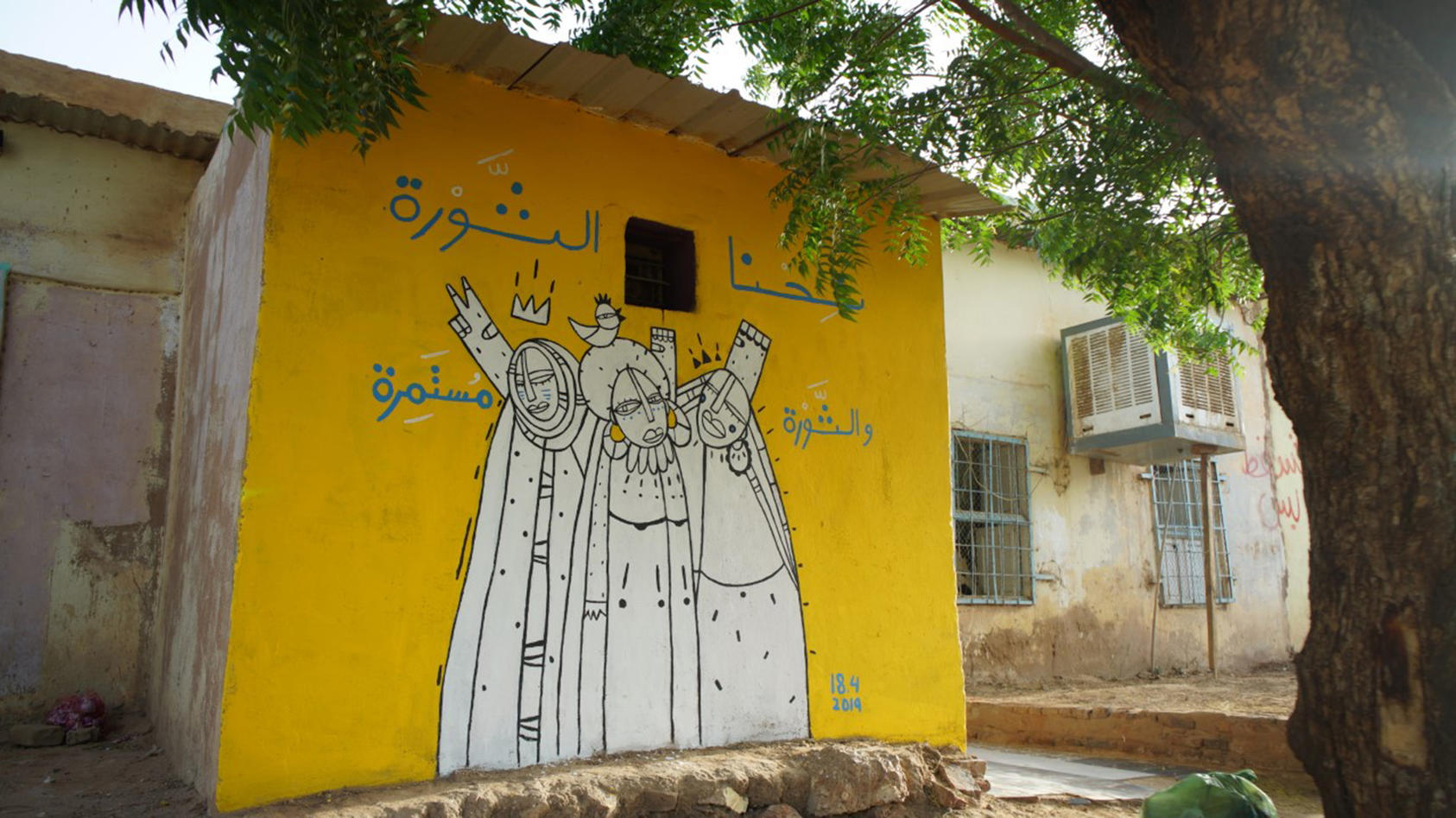
Virtual Art: Expanding the Revolution Beyond Sudan’s Borders
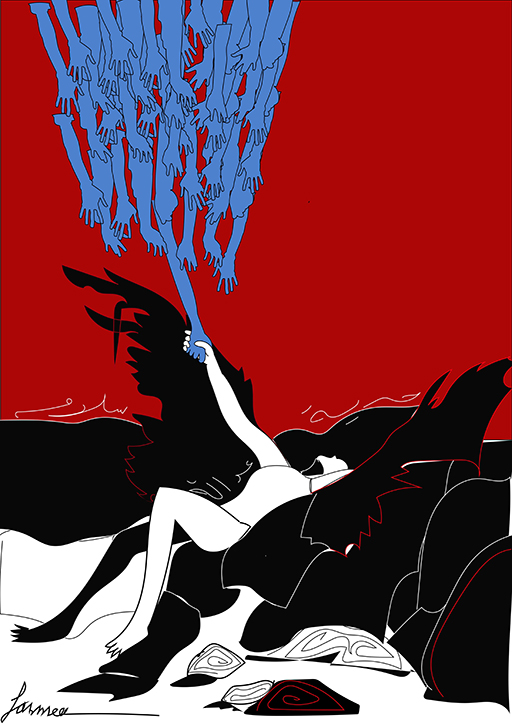
Within Sudan, online communication was a critical tool for organizing during the revolution, although efforts were hampered by government-initiated internet outages and blockages of key sites. But for those outside of Sudan—including artist Yasmeen Abdullah—social media campaigns allowed them to express their support. The most widely publicized of these campaigns was “Blue for Sudan,” in which users turned their profiles blue in solidarity following the killing of activist Mohamed Hashim Mattar during the Khartoum military headquarters sit-in crackdown on June 3, 2019.
Digital art also opened the doors to experimentation with new mediums. Dubai-based artist Merghani Salih created massive photo mosaics composed of images from the revolution. Describing his process of creation, Merghani said: “I found myself building an archive with all the daily images and videos which were being shared across all social media channels from across Sudan. I then contemplated that if a picture is worth a thousand words, what if that picture was physically made up of one thousand images?”

Revolution on Canvas: Sudan’s Unique Artistic Tradition
Mustafa Abushamma was not surprised that Sudanese artists were able to reach such a wide audience during the revolution, as Sudan is often recognized as an important influence in the development of modern art in Africa through the Khartoum School—Sudan’s modernist art movement founded in 1960. “Sudanese art is a mix of Arab and African, and this is very unique to Sudan,” said Abushamma. “The art coming out of Sudan is not like any art around the world … we see that in the colors, the motifs that we use, and it speaks to a lot of people.”
Abushamma founded his gallery 10 years ago to highlight a diverse slate of artists and to get more Sudanese art into Sudanese homes. He is pleased with the changes that he has seen, noting that increased appreciation for original art means that more artists are able to support themselves. And even amid a tenuous democratic transition, Mustafa is energized for the future when he speaks about the trajectory of young Sudanese artists. Describing the work of Darfuri artist Osman Gouma Ahmed, currently in his early 20s, Mustafa says, “Can you imagine what he will be able to do in 10 years?”

Hussein Merghani is a more seasoned artist who is also featured at Mojo Gallery. His watercolor of the Atbara Train—also known as the Freedom Train—captured one of the most iconic images of the revolution. Hundreds of protestors from Atbara, a city in Sudan’s north that saw some of the earliest protests in the revolution, commandeered a train in April 2019 to travel southward to Khartoum to join the sit-in at the military headquarters. As the train moved slowly along its 200-mile route, Sudanese cheered from alongside. The Atbara Train came to symbolize the broad support for the revolution from across the country. While the Atbara Train watercolor (featured at the top of the page) captures one of the joyous moments of the revolution, Hussein has also depicted the tense everyday moments in the months-long demonstrations, including in a watercolor of a young boy leading a protest with an empty water barrel.

Art in the Transition
Hussein Merghani has used proceeds from his art to pay for continued mural painting around the site of the sit-in at Khartoum’s military headquarters. And he’s not alone—as Sudan shifts from revolution to transition, other artists are supporting social projects throughout the country.
Muralist Assil Diab has adapted her art to the COVID-19 reality, painting murals that encourage mask wearing—including one featuring a diverse group of Sudanese people wearing traditional dress and face masks. As she was painting the mural, she and her team took the opportunity to raise awareness of health precautions with passersby.
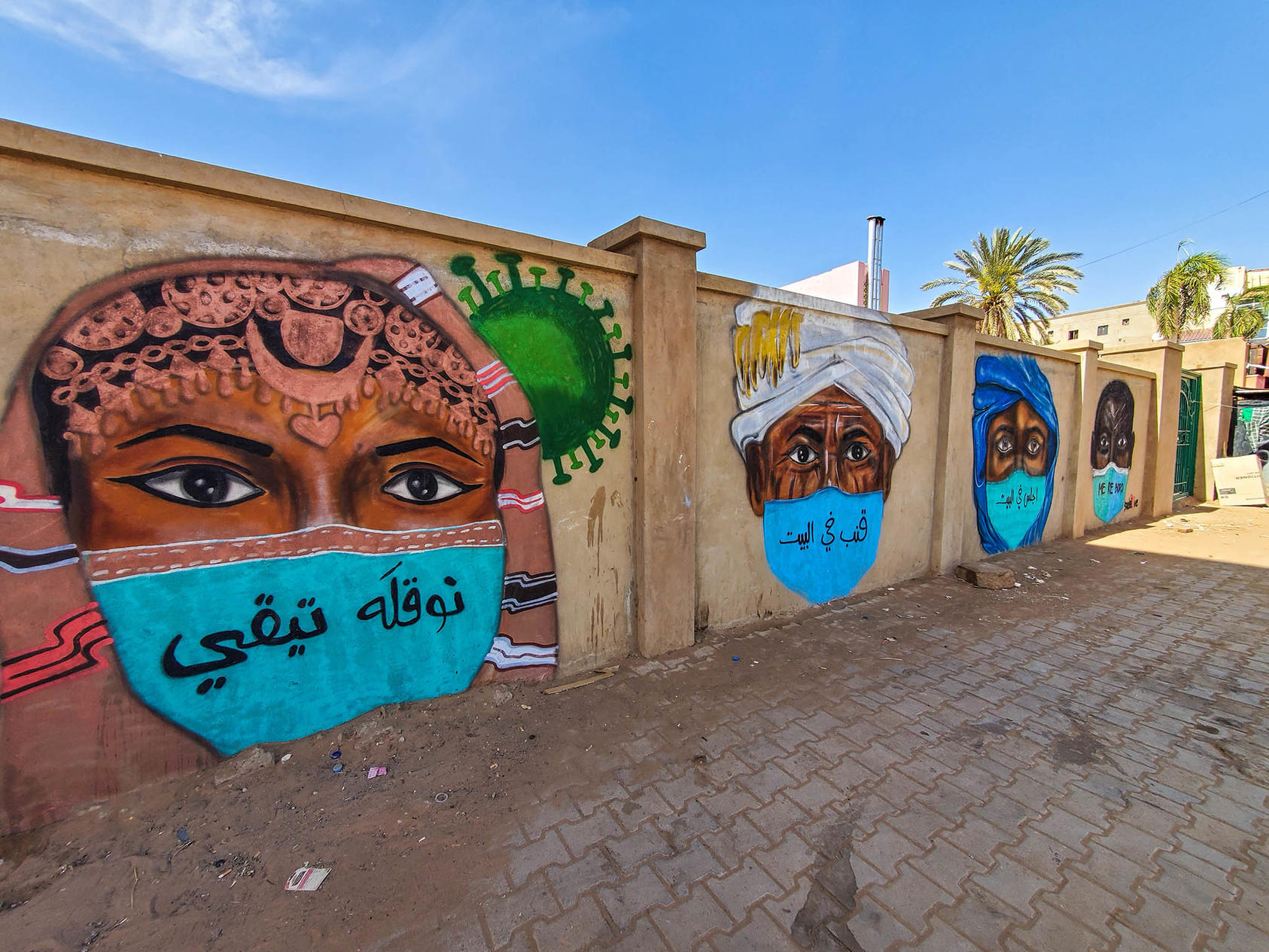
Publishing with the hashtag #Khartoon, internationally renowned cartoonist Khalid Albaih levels sharp-witted critiques of injustices around the world. In July, following the army’s statement that citizens publicly criticizing the military could be arrested, he published a widely shared cartoon of a crocodile in military fatigues with large tears rolling down its face. Khalid’s work has mobilized others to use art as a tool to advocate for change in Sudan. And Khalid does not limit his expression to art—he has also written widely, including on the need for further U.S. support to Sudan’s transition.
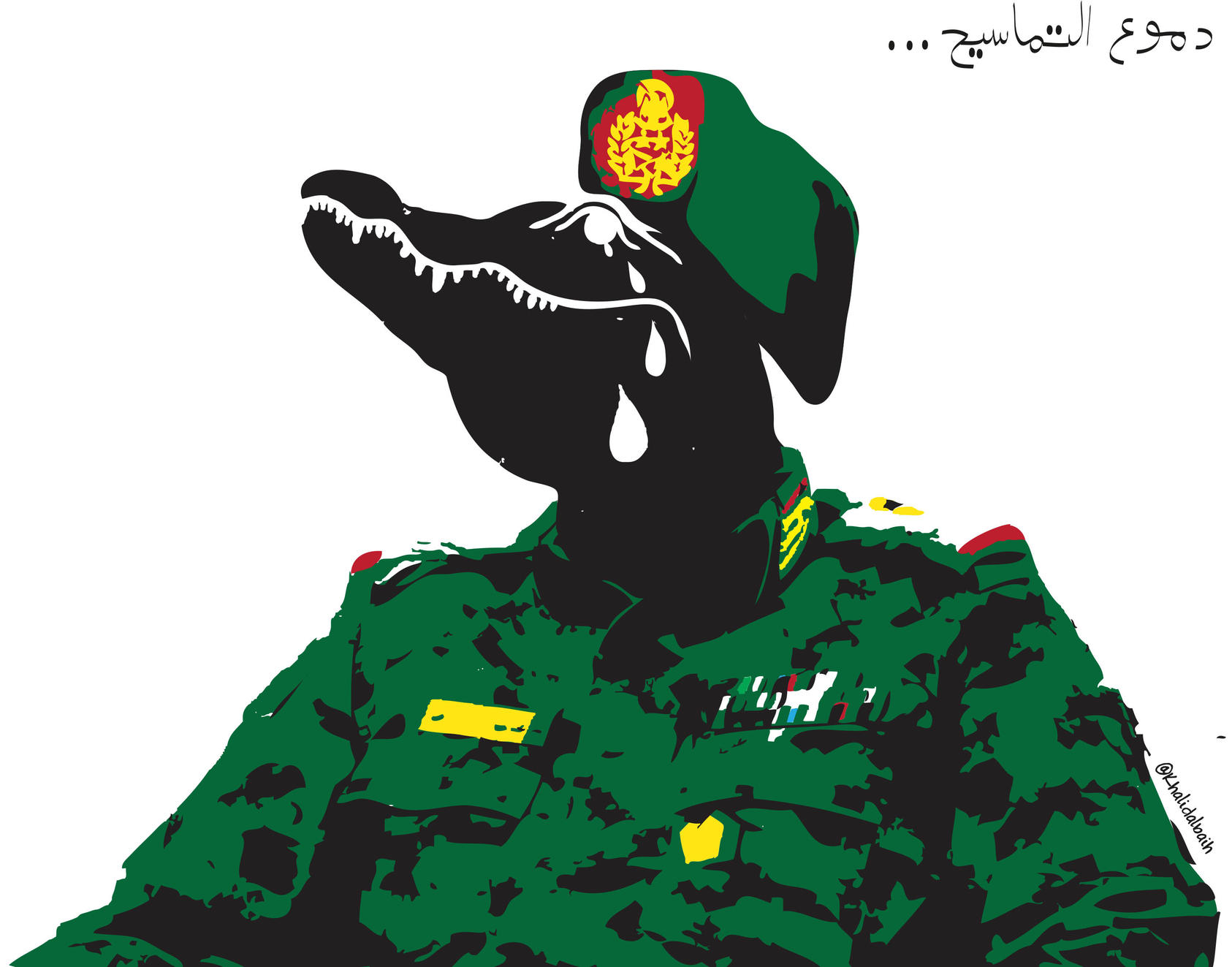
Sudan’s nonviolent revolution and the creativity that buoyed it are reasons for celebration. But the country faces a myriad of challenges during its transition, including a pandemic and a severe economic crisis that have led to renewed protests in the streets. Additionally, a prominent case where 11 Khartoum artists were jailed this past August has drawn broad condemnation, highlighting the need for legal and judicial reform during the transition to protect freedom of expression.
The work must continue, and there is still an important role for artists—in opening space for public conversations, expressing grievances and hopes, and helping to hold all bodies of the transitional government to account. And the transitional government can honor Sudan’s recent history by preserving revolutionary art for future generations and by nurturing the immense talent and creativity that helped to bring it to power.
https://www.usip.org/publications/2020/11/three-things-you-thought-you-knew-about-freedom-religion-or-belief
Three Things You Thought You Knew About Freedom of Religion or Belief
By Jason Klocek; Scott Bledsoe
An ever-growing amount of data on global religious restrictions challenges us to rethink best practices for promoting religious freedom.
Accounts of global religious restrictions and hostilities have, unfortunately, become a regular feature of today’s news cycle. India’s passage of the Citizenship Amendment Act, which uses religious identity as a criterion for citizenship, and its violent crackdown against protesters made headlines at the turn of year. The Chinese government’s detention of more than a million Uyghur Muslims, increased surveillance, and other religious regulations in Xinjiang continue to garner much attention. And, increasingly more concern has been given to the ongoing attacks on Christian communities in Nigeria. While these examples are, of course, worrying and must be addressed, a deeper dive into the data reveals that many of the assumptions we hold about the state of global religious freedom need further unpacking.
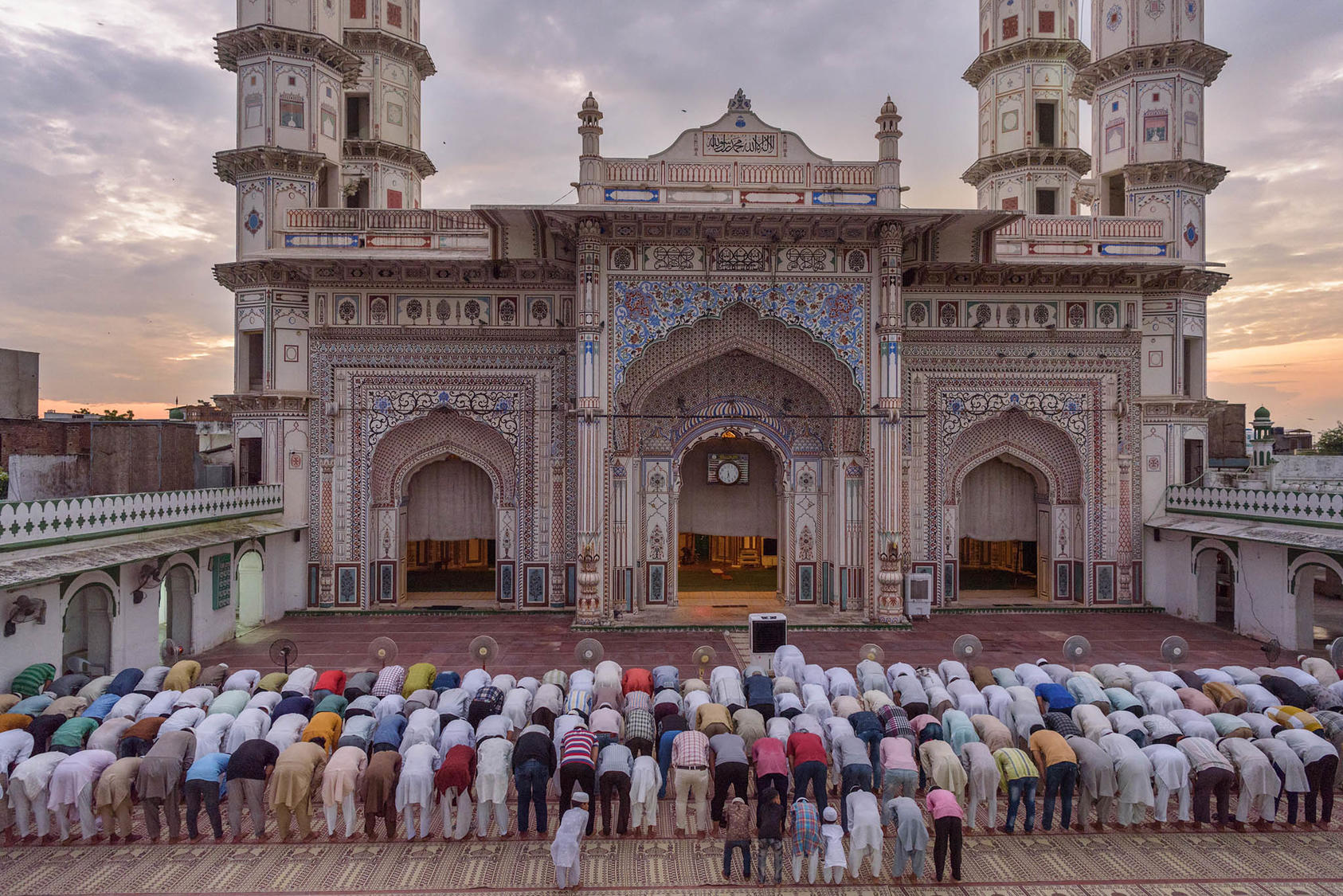
Next week Poland will convene the third Ministerial to Advance Freedom of Religion or Belief with such questions in mind. The virtual meeting will bring together government and civil society leaders from around the world with the goal of scaling up the international community’s efforts to protect and promote the right to freedom of religion or belief (FoRB). Informing much of that discussion will be the considerable amount of new data pointing to a steady decline in religious freedom around the globe, a pattern exacerbated further by the COVID-19 pandemic.
At USIP, we are also contributing to the conversation. As part of our “Closing the Gap” project, we recently compiled and analyzed a composite dataset consisting of diverse measures of religious freedom and relevant macrosocial factors for 176 states from 1990 to 2014. The former included three of the most prominent data sources on religious regulations and hostilities: the Pew Research Center’s Global Restrictions on Religion (Pew) data, the Religion and State (RAS) project, and the Varieties of Democracy (V-Dem) project. We were particularly interested in better understanding the relationship between religious freedom, political stability, and economic development.
Our findings both confirm and challenge conventional thinking, especially about the benefits of religious freedom. Most importantly, they underscore the need to consider the specific conditions under which FoRB impacts peace and development. The causes and consequences of religious restrictions are complex and may not operate the same in all environments.
Here are three things you may think you know about FoRB, but may be worth reevaluating.
1. FoRB is associated with democracy, but Western democracies do not necessarily have the highest levels of FoRB.
Today, the idea that FoRB and democracy go hand in hand is almost viewed as common sense. Our analysis generally confirms this relationship. We found a positive and significant correlation between religious freedom and a variety of democracy measures. Indeed, democracy stands out as the most consistent predictor of higher levels of FoRB in almost all of our models. Australia, Canada, Ireland, Mauritius, and New Zealand ranked particularly high. The story, however, does not end there.
While FoRB and democracy may frequently go together, they do not always do so—a point stressed in Dr. Jonathan Fox’s latest book on why governments discriminate against religious minorities. Drawing on his RAS dataset, Fox persuasively shows that democracies and even some non-democracies in Latin America, Asia, and sub-Saharan Africa engage in lower levels of religious regulation than many liberal Western democracies. Our analysis corroborates those findings.
Furthermore, FoRB and democracy do not always reinforce one another. Both the Pew and RAS datasets indicate that some of the largest increases in religious restrictions over the past half-decade have been in Western democracies, especially in Europe. France’s crackdown last month, including dozens of raids on Muslim aid groups, in the wake of a teacher beheading in a northern suburb of Paris and knife attack at a church in Nice suggest that this trend is not likely to wane, at least in the short term. Another reason for reservation is that rising religious restrictions in Europe are in line with other studies that note a worsening state of human rights in many democracies, even more so during the COVID-19 pandemic. In the end, democracy may contribute to, but does not necessarily guarantee, FoRB.
2. Religious restrictions can fuel conflict, and conflict can lead to religious repression.
Another oft-cited benefit of religious freedom is political stability and peace. The general idea is that religious discrimination, like other forms of state repression, can lead communities to take up arms in order to overcome their marginalization. This has been a concern raised, most recently, with respect to China’s crackdown against Uyghur Muslims, with many analysts warning that religious repression will eventually lead to a backlash in Xinjiang.
Our analysis supports this idea with two cautionary notes. One is that especially high levels of state repression often forestall armed rebellion. Take Vietnam, North Korea, Saudi Arabia, and Iran as examples. Each stands out as having some of the lowest levels of religious freedom in the world, but each also has a strong state apparatus that deters collective action and maintains stability, if not peace.
A second, equally important point, is that there is often a cycle of repression and violence. Repression can lead to conflict, but also conflict can lead to more religious regulation. For instance, intercommunal violence in Myanmar, especially between Buddhist and Rohingya communities, was followed by an uptick this past year in religious discrimination of Rohingya and other Muslims, Buddhists, Christians, and Hindus. In a similar pattern, Russia ramped up its regulation of faith communities once frontline rebel commanders in the North Caucasus began framing the conflict as a holy war and attracting an influx of foreign fighters. These examples also suggest that the type of conflict can matter. I have shown in other work with Dr. Peter Henne how religious rebellions, specifically, lead to more government regulation of faith communities.
3. FoRB does not guarantee economic growth.
A third purported benefit of religious freedom is economic growth, although it is often acknowledged that the link between the two is not necessarily direct. Rather, it is argued that religious restrictions and hostilities—and associated conflicts—can contribute to conditions that undercut growth, such as deterring investment or disrupting critical sectors of the economy. Much of the analysis backing these claims draws on the Pew data and focuses on conditions in a single year.
Our investigation does not yield similar support. Neither our time series nor our cross-sectional evaluation of specific years with other data sources—including a wide range of measures for economic development—offer robust evidence of a positive relationship between religious freedom and economic growth. If anything, we actually find a negative association between the two. This is perhaps less surprising when one considers that some of the sharpest declines in religious freedom in the past decade have been in upper middle- and high-income countries, including Western democracies as discussed above. It certainly calls for additional study.
In conclusion, our findings raise important questions about how to scale up the international community’s efforts to better protect and promote FoRB. Most importantly, they stress the need for more understanding of when and where FoRB is most likely to impact peace and development. There is no denying that millions around the world still face substantial constraints on their ability to adhere to and practice their faith in private or public or hold no faith at all. We hope our work will challenge policymakers and practitioners alike to take advantage of the full set of tools available for advancing FoRB.
Scott Bledsoe is a research assistant for the Religion and Inclusive Societies program at the U.S. Institute of Peace.




